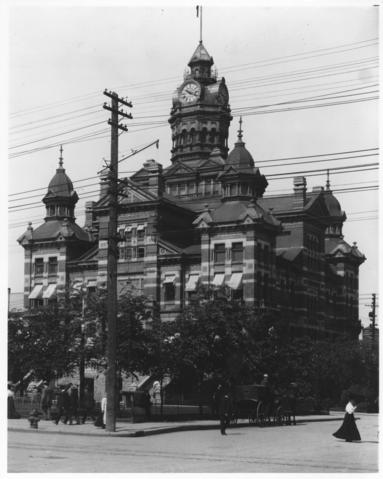
This year marks the 60th anniversary of Winnipeg’s current City Hall building.
Over the past 150 years Winnipeg’s important civic affairs were conducted in three different buildings.
“Important bylaws and initiatives that shaped the city as we know it were approved in these buildings,” said Murray Peterson, Heritage Officer.
The City of Winnipeg was incorporated in 1873. Since then, it has been administered by an elected Council, under the leadership of a mayor.
One of the priorities of Winnipeg’s first Council was to build a permanent location for the administration of civic affairs.

Construction of Winnipeg’s first City Hall, which was located on Main Street between William and Market avenues, began in August of 1875 with the laying of the cornerstone.
Local businesses declared the day a holiday and over 500 people were said to have witnessed the ceremony.
The building‘s cost, which was nearly $40,000, was a hefty sum at that time.
It was completed in 1876, but suffered from chronic structural problems, forcing City officials to prop up the walls.
“Eventually, it was deemed unsound and demolished seven years after it opened,” said Peterson.
Winnipeg’s second City Hall: ‘A Victorian fantasy’
The second City Hall was designed by Barber and Barber and built by Robert Dewar.
Completed in 1886, the so-called “Gingerbread” City Hall symbolized Winnipeg’s coming of age at the end of the 19th century and was described by some as a “Victorian fantasy.”
“This beautiful City Hall was quite an achievement for a city that had a population of less that 700 only 15 years before,” said Peterson.


Instead, the grand old building stood for another 50 years.
Shortly after the Second World War, a committee was struck to study the issue of civic accommodation and growing concerns over the structural integrity of the City Hall.
After a great deal of public debate, Winnipeg’s second City Hall was demolished in 1962 to make way for the present one.
Current City Hall
The current City Hall was designed by the Winnipeg firm of Green Blankstein Russell Associates, the winners of a design competition held in the 1960s.
The site plan originally called for construction of two buildings – one for Council and one for the Public Service. The footprint was increased to include a parkade and a Public Safety Building, which served as the headquarters for what we now know as the Winnipeg Fire Paramedic Service and Winnipeg Police Service.

The winning design was representative of post-war trends in both architecture and urban planning.
The current City Hall was completed in 1964, and formally opened in October of that year.
To learn more about Winnipeg’s history, view the online resources compiled by the Winnipeg Archives and the Winnipeg Public Library.
Learn more about how we’re marking 150 years as a city.
